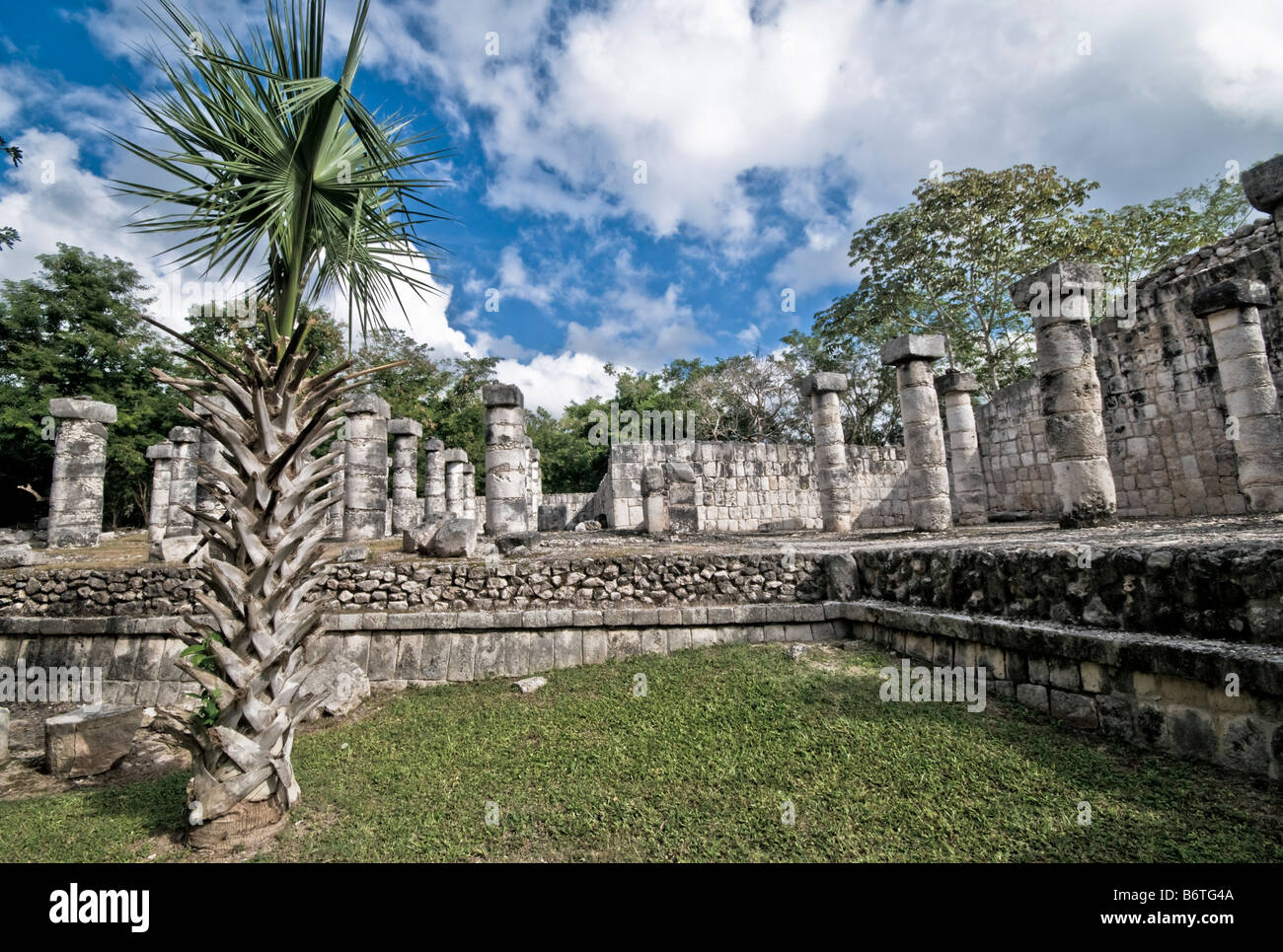CHICHEN ITZA, Mexico - Ancient Mayan ruins at Chichen Itza, Yucatan, Mexico. Chichen Itza, located on the Yucatan Peninsula in Mexico, is a significant archaeological site showcasing the rich history and advanced scientific knowledge of the ancient Mayan civilization. It's most known for the Kukulkan Pyramid, or "El Castillo," a four-sided structure with 91 steps on each side, culminating in a single step at the top to represent the 365 days of the solar year.

Image details
Contributor:
David Coleman | Have Camera Will Travel / Alamy Stock PhotoImage ID:
B6TG4AFile size:
48 MB (2.6 MB Compressed download)Releases:
Model - no | Property - noDo I need a release?Dimensions:
4992 x 3361 px | 42.3 x 28.5 cm | 16.6 x 11.2 inches | 300dpiDate taken:
16 December 2008Location:
Chichen Itza, Chichen Itza, Yucatan, MexicoMore information:
Chichen Itza, located on the Yucatan Peninsula in Mexico, is a significant archaeological site showcasing the rich history and advanced scientific knowledge of the ancient Mayan civilization. It's most known for the Kukulkan Pyramid, or "El Castillo, " a four-sided structure with 91 steps on each side, culminating in a single step at the top to represent the 365 days of the solar year. Apart from the Kukulkan Pyramid, several other structures within the site reflect the Mayan's profound understanding of astronomy, mathematics, and architecture. The Great Ballcourt, the largest and best-preserved ancient sports field in Central America, is adorned with intricate bas-relief carvings. The Temple of the Warriors, with its forest of columns, is another impressive structure, adorned with carvings of the ancient Mayan warriors. The observatory, known as El Caracol, demonstrates the Mayans' precise understanding of celestial events. The building's windows align with the positions of Venus at particular times, allowing the Mayans to track this planet's cycles accurately. A significant annual event at Chichen Itza is the equinox. During the equinox, a shadow is cast on the Kukulkan Pyramid that resembles a feathered serpent descending the steps—this illusion is a testament to the Mayans' astronomical knowledge. Chichen Itza is also known for its cenotes—natural sinkholes that were considered sacred by the Mayans. The Sacred Cenote was a place of pilgrimage and a site for rituals and sacrifices.